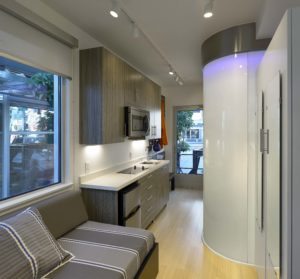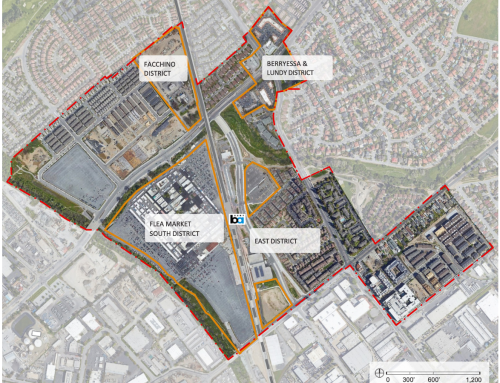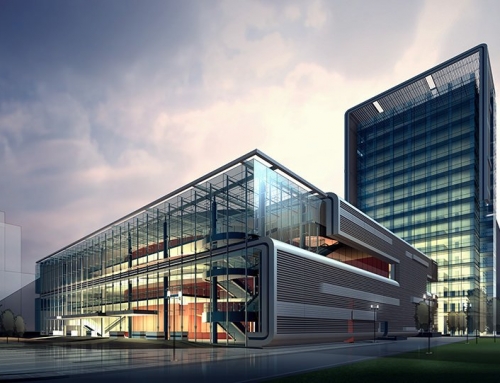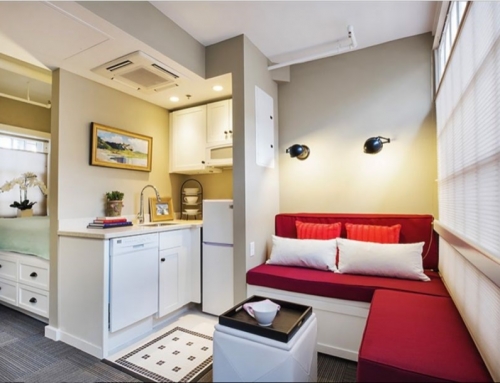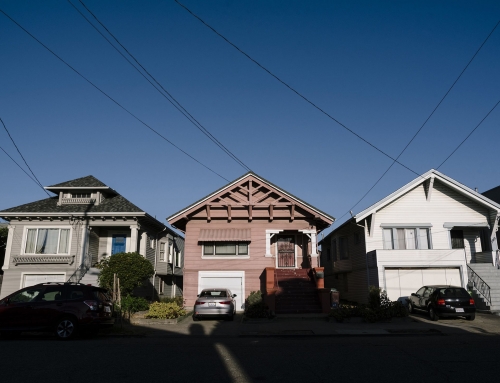Scott Beyer – Forbes – Mar 31, 2017
San Francisco, CA–There’s no doubt that the demand for living in San Francisco would, under an open market, create far more housing; this, in essence, is what the high prices and Nimby battles are all about. But one remaining mystery would be—void of the regulatory barriers, what type of housing would all this demand create? Existing data and anecdotal observation suggests that a lot of it would be micro housing.
Indeed, micro units—which vary by definition, but are generally thought to be studio apartments of under 300 square feet—are taking off in U.S. cities. Before Seattle’s government effectively regulated them away, they were accounting for a quarter of the city’s new housing starts. Other prominent projects have gone up in New York City, Austin, Denver, and other places where density and high prices require smaller living arrangements. The nation’s largest micro-unit project is even being built near downtown Houston, a city where big, cheap sprawl housing is still readily available, even close in (although some of the project’s units have since been converted to condo hotels).
San Francisco is also seeing some micro housing growth, most notably from developer Patrick Kennedy, of the firm Panoramic Interests. He’s built over a dozen projects, usually between 4 to 12 stories, in the city and neighboring Berkeley. They feature units of well below 300 square feet–such as his 160 square foot “MicroPAD” that has its own bathroom–along with 2- or 3-bedroom units that nonetheless remain below 1,000 square feet. His projects generally have just a few on-site parking spaces, since his clientele don’t own cars, but instead get around via walking, transit and ridersharing.
While Kennedy, speaking in his SoMa neighborhood office, said that zoning regulations and strict building codes prevent him from building more of this housing, there is evidence that it is in high demand. A 2014 research project conducted by the Urban Land Institute found that, across America, units smaller than 600 square feet had higher occupancy rates and per-square-foot rents than bigger units. This fits with broader trends showing that Americans have begun settling for smaller homes. ULI also found that micro housing tenants tend to be young, single and male, and value proximity to services and the ability to live alone, rather than more space.
This would explain why San Francisco–and similar cities–would be an obvious market for such housing. 60% of the city is single, 10 points above the national average, and the city is overwhelmingly more male. It also has, more than any other U.S. city besides New York, the dense urban characteristics that compel consumers to pay more for less housing. This explains why Kennedy’s micro-unit rents generally start at $3,500/month, just above the city’s median one-bedroom rent prices.
This market demand is also apparent at the anecdotal level–and big time. During my recent stay in San Francisco, I either met firsthand, or heard about through secondary sources, countless people who are enduring far worse living conditions than what a micro unit would provide. Some centrally-located hostels, for example, are providing more or less permanent residency to young professionals willing to cluster together in rooms with multiple people. Many of the Airbnb listings below $100/night are “shared room” offerings such as air mattresses, living room sofas, bunk beds and even a tent from Burning Man. Even those on the professional-level end of the wage scale are–to a seemingly uniform degree–having to share homes with others. For example, Steven Buss, a Google software engineer with a salary in the low 6-figures, lives in an 850-square-foot apartment with a friend in the Mission District. He says that all of his peers in the city endure some form of shared living, which would make renting a micro unit feel like a luxury, rather than the stigma it may carry in other parts of America.
“I’d like a 30th-story, 300-square-foot studio,” said Buss, describing his ideal San Francisco living arrangement, “and I would just want it to be close to my work and to good nightlife.”
Kennedy said that his market analysis leads to similar conclusions about the preferences of San Francisco’s young professionals. He believes that there would be demand for large micro housing projects anywhere in the Bay Area that has a good concentration of transit and services. This includes most of San Francisco, Oakland and Berkeley, and some additional stops along the BART train system. When I asked him to give a ballpark figure of the number of units he would build–assuming that proper deregulation and financing were in place–his answer blew me away: 100,000.
After all, he explained, the Bay Area now has 1 million more jobs than housing units, and the estimated housing shortage is in the 6-figures. Micro housing would serve as a sizable niche in an otherwise diverse and widespread housing market.
“If I had permits,” said Kennedy. “I would build 10,000 MicroPADs in the 3 blocks around my office. But, alas, I don’t.”


